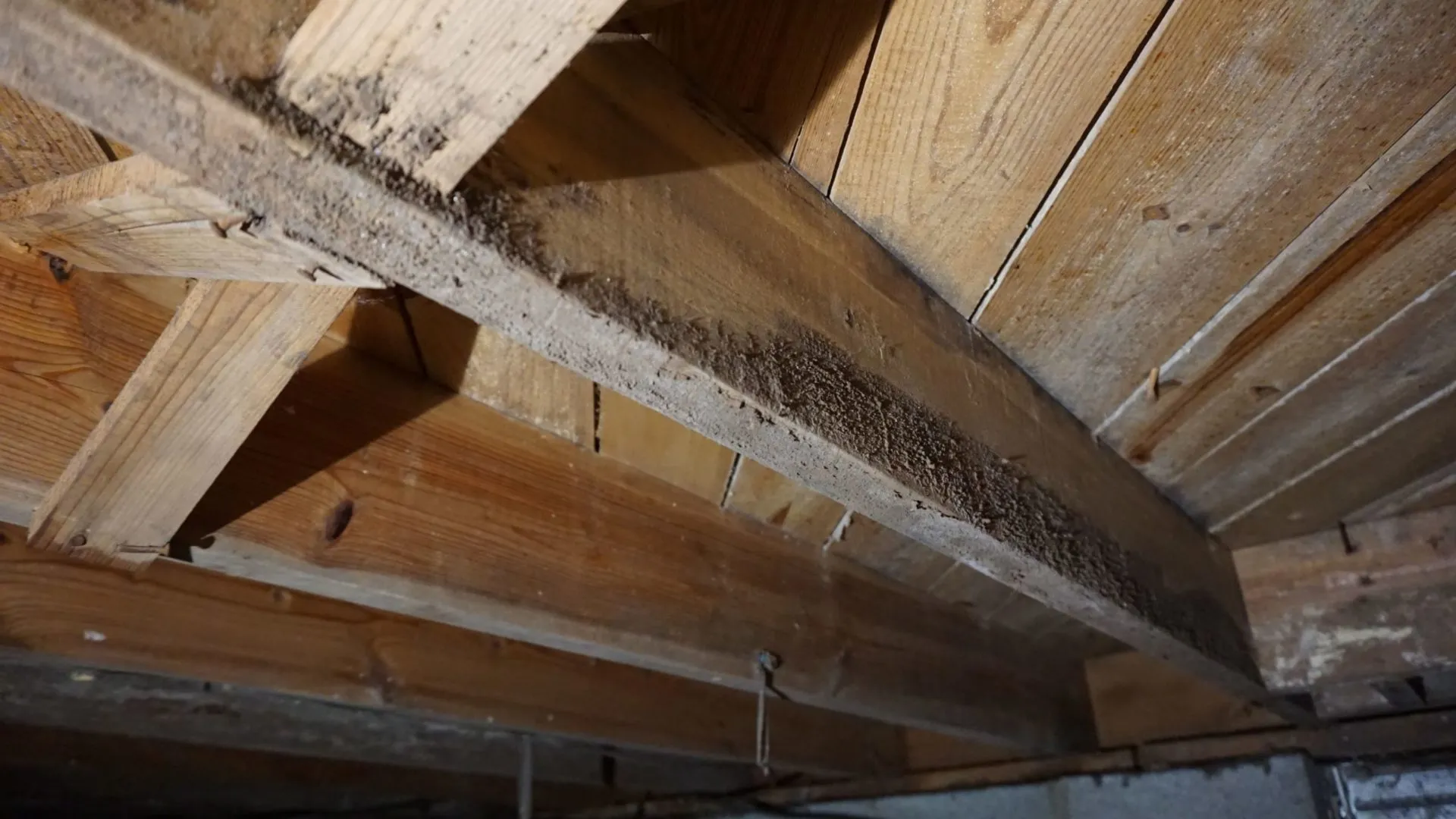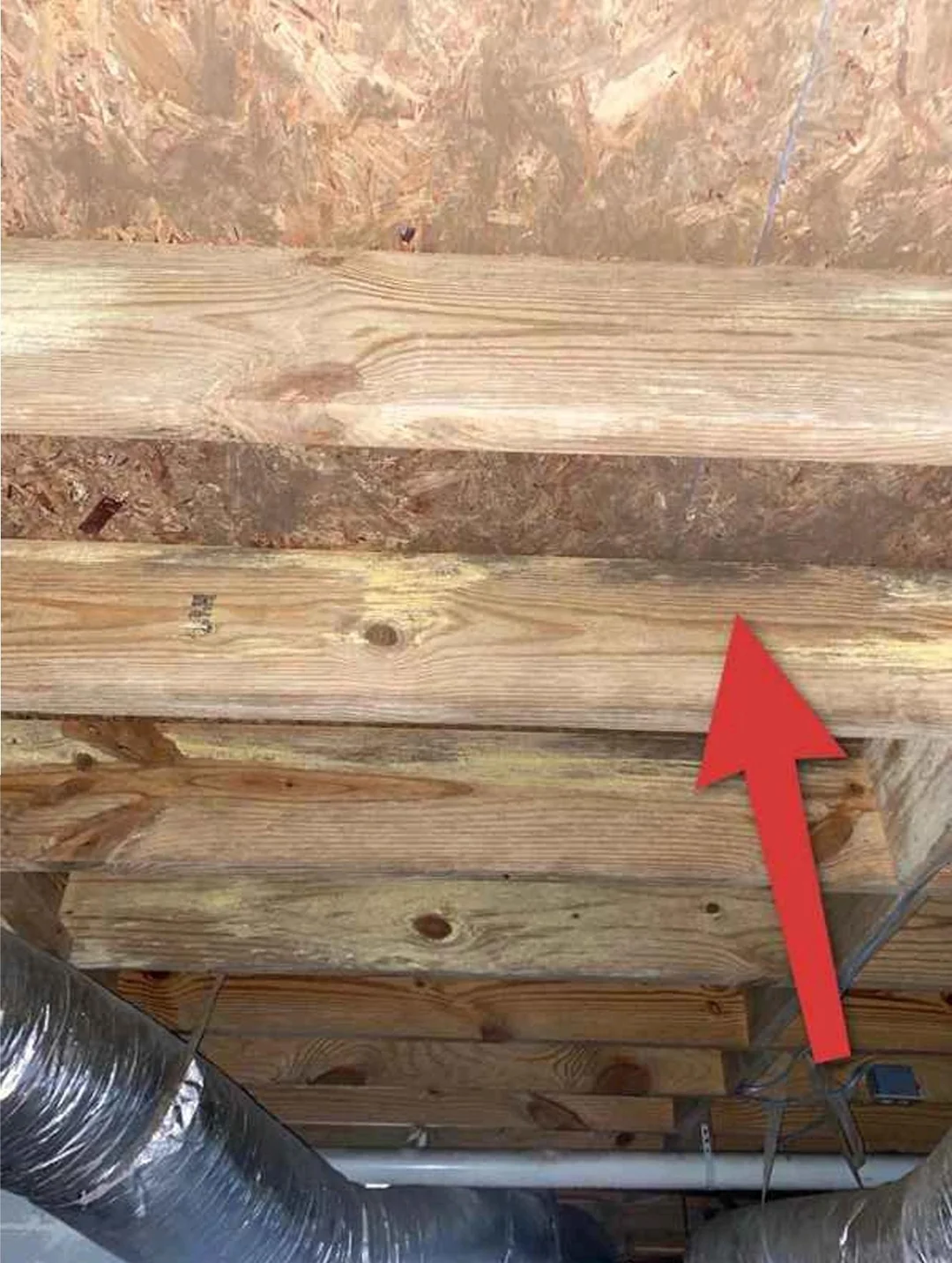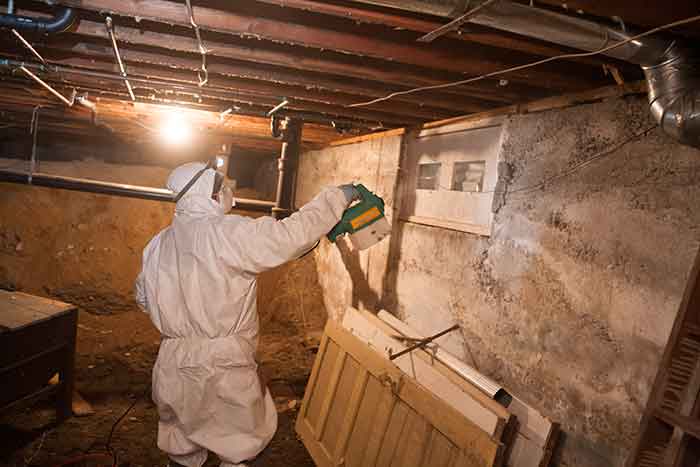What Causes Mold in Crawl Spaces?

Mold grows in crawl spaces due to excess moisture and poor ventilation. Crawl spaces are often damp and humid, especially in areas with poor drainage or water leaks. According to the EPA, mold can thrive within 24-48 hours in areas with excessive moisture. Other common causes of mold in crawl spaces include:
- Water leaks: Leaking pipes or cracks in your foundation can cause water to seep into your crawl space, creating the ideal conditions for mold growth.
- High humidity: Crawl spaces are prone to high humidity, especially in regions with warm, humid climates. Without proper ventilation, humidity can build up, leading to mold.
- Flooding: If your area is prone to flooding or heavy rains, water can collect in your crawl space and lead to mold problems.
- Condensation: In homes with poor insulation, cold air can meet warm surfaces in the crawl space, leading to condensation that fuels mold growth.
To understand more about how humidity and moisture contribute to mold growth, check out this detailed guide from Energy Star on controlling indoor moisture.
Signs of Mold in Your Crawl Space

Mold in crawl spaces can go unnoticed for months, or even years, because these areas are typically out of sight. However, there are some warning signs that can alert you to a potential mold problem:
- Musty odors: A persistent, musty smell in your home, particularly near the floor, could indicate mold growth in the crawl space.
- Visible mold: If you have access to your crawl space, check for visible signs of mold on wood, insulation, or other surfaces. Mold often appears as white, black, or green spots.
- Allergic reactions: Mold can cause respiratory issues such as coughing, sneezing, or worsening asthma. If these symptoms worsen when you’re at home, mold in your crawl space could be to blame.
- Floor damage: Warped or sagging floors can be a sign of mold damage in the crawl space affecting the wood joists or subflooring.
If you suspect mold is in your crawl space but aren’t sure how to access it safely, consult a professional like Citywide Mold Mitigation for an inspection.
How to Remove Mold from Your Crawl Space

Removing mold from your crawl space requires careful handling to avoid spreading mold spores to other areas of your home. If the mold covers a large area or has caused structural damage, professional remediation may be necessary. Follow these steps for safe DIY mold removal in your crawl space:
| Step | How to Do It |
|---|---|
| 1. Wear Protective Gear | Always wear proper protective gear, including an N95 mask, gloves, and goggles, to prevent exposure to mold spores. Mold can cause respiratory issues, so safety is key when working in a confined crawl space. |
| 2. Dry Out the Crawl Space | Before tackling mold removal, make sure your crawl space is dry. Use a dehumidifier to reduce humidity levels and fans to improve air circulation. This helps stop mold from spreading during the cleaning process. |
| 3. Scrub the Mold | Mix a solution of water and white vinegar or a mold-specific cleaner. Use a scrub brush to carefully remove the mold from affected surfaces, including wood, insulation, and concrete. Be gentle with wood surfaces to avoid damage. For tougher areas, a solution of water and baking soda can be effective. |
| 4. Clean the Area Thoroughly | After scrubbing, wipe the area with a clean, damp cloth to remove any remaining mold residue. Allow the surfaces to dry completely, using fans or a dehumidifier to speed up the process. |
| 5. Apply a Mold-Resistant Sealant | Once the crawl space is dry, consider applying a mold-resistant sealant to wooden beams and other porous surfaces. This creates a protective barrier to prevent mold from returning. |
For more tips on safely removing mold, check out this comprehensive guide from the CDC on mold cleanup after water damage.
How to Prevent Mold from Growing in Your Crawl Space

Once you’ve removed mold from your crawl space, it’s essential to take preventative measures to stop it from returning. Here are some effective ways to keep your crawl space mold-free:
1. Control Humidity Levels
Humidity is one of the main culprits behind mold growth. Use a dehumidifier in your crawl space to maintain humidity levels below 50%. Installing a humidity monitor can help you track moisture levels and ensure the environment stays dry. For larger crawl spaces, consider an industrial-strength dehumidifier.
2. Improve Ventilation
Good airflow helps keep moisture levels in check. Make sure your crawl space is properly ventilated with vents that allow air to circulate. Consider installing a ventilation fan or a crawl space vent cover that promotes airflow without letting excess moisture in.
3. Fix Water Leaks Immediately
Even small leaks can lead to mold problems if left unaddressed. Inspect your crawl space regularly for signs of water intrusion, including damp spots, puddles, or condensation on pipes. Seal any cracks in your foundation and fix plumbing leaks promptly.
4. Insulate Your Crawl Space
Proper insulation helps reduce condensation and keeps the temperature stable, which can prevent mold from forming. Consider installing vapor barriers on the floor and walls of the crawl space to reduce moisture coming in from the ground. Insulating pipes can also prevent condensation buildup that could lead to mold growth.
For additional insulation tips, you can explore this Energy Saver guide to home insulation.
When to Call Citywide Mold Mitigation for Help
While DIY mold removal methods can be effective for small areas, large-scale mold infestations or structural damage should always be handled by professionals. If mold in your crawl space has spread to other areas of your home, or if you’re concerned about your health, it’s time to call in the experts.
Citywide Mold Mitigation specializes in mold removal and remediation services. Our team can safely inspect your crawl space, remove the mold, and implement moisture control solutions to prevent future growth. Contact us today to schedule a consultation and protect your home from the dangers of mold.
FAQ
| Question | Answer |
|---|---|
| Is mold in my crawl space dangerous? | Yes, mold in your crawl space can spread throughout your home, causing structural damage and posing health risks such as respiratory issues, allergies, and asthma. |
| What does mold in a crawl space smell like? | Mold in a crawl space often produces a musty, stale odor. If you notice a persistent musty smell in your home, it could be a sign of mold growth in your crawl space. |
| Can I remove mold from my crawl space myself? | If the mold covers a small area, you can remove it yourself using protective gear and proper cleaning solutions. However, if the mold infestation is large or has caused damage, it’s best to hire professionals like Citywide Mold Mitigation. |
| How do I keep mold from growing in my crawl space? | To prevent mold, keep your crawl space dry with a dehumidifier, improve ventilation, fix any water leaks immediately, and consider adding insulation and vapor barriers to reduce moisture buildup. |
| Can mold in the crawl space affect the rest of my home? | Yes, mold spores can spread from your crawl space to other areas of your home, potentially causing health issues and damaging floors, walls, and ceilings. |
For professional mold removal in your crawl space or anywhere in your home, contact Citywide Mold Mitigation today. Our experts will help you get rid of mold and keep it from coming back.

